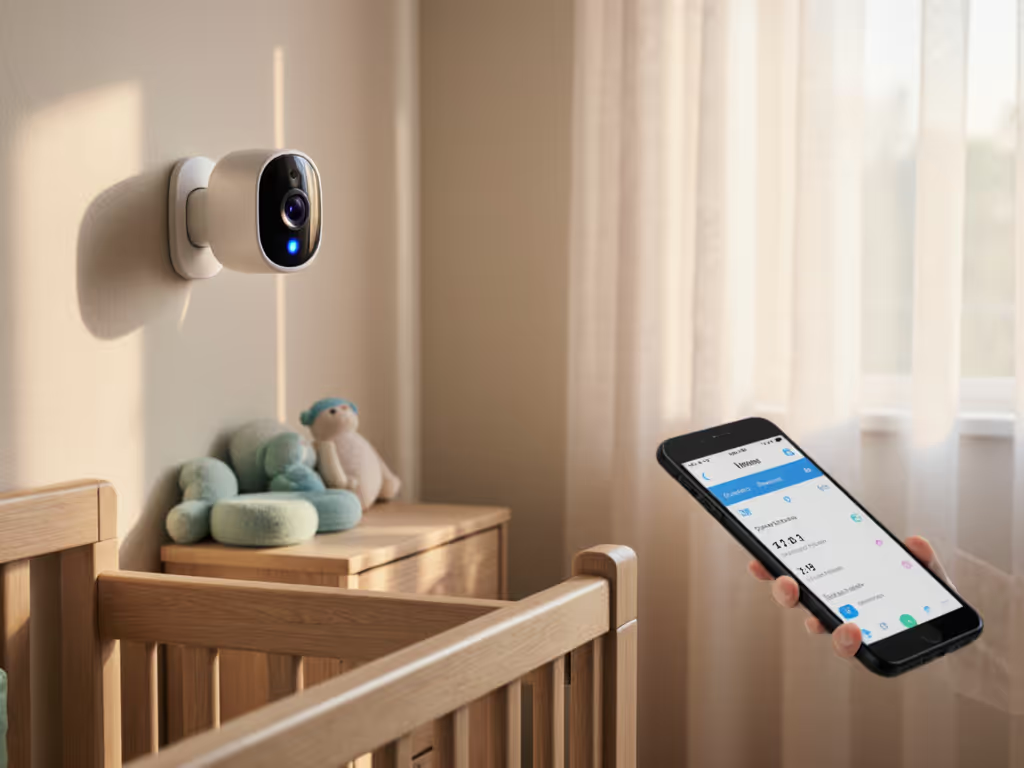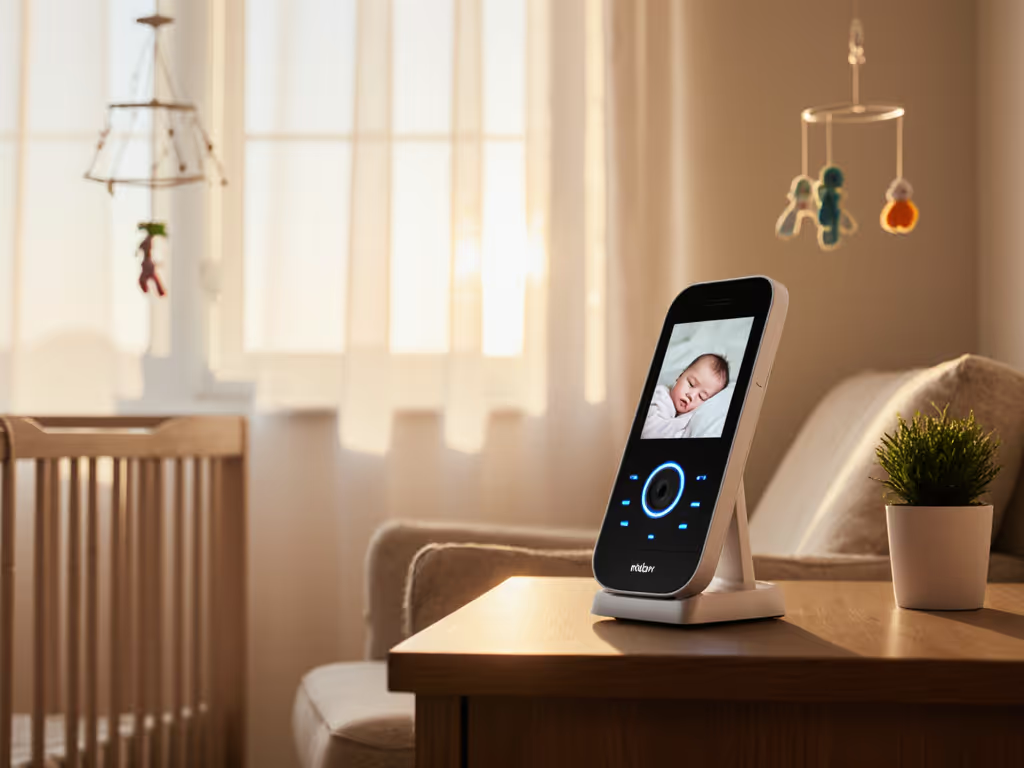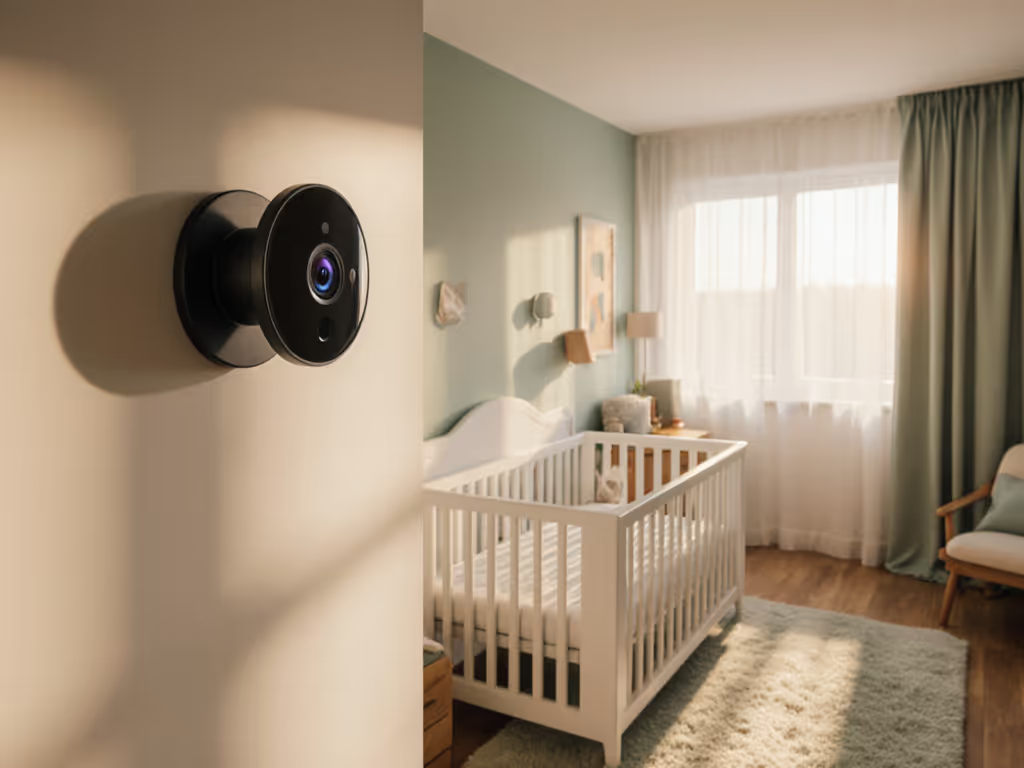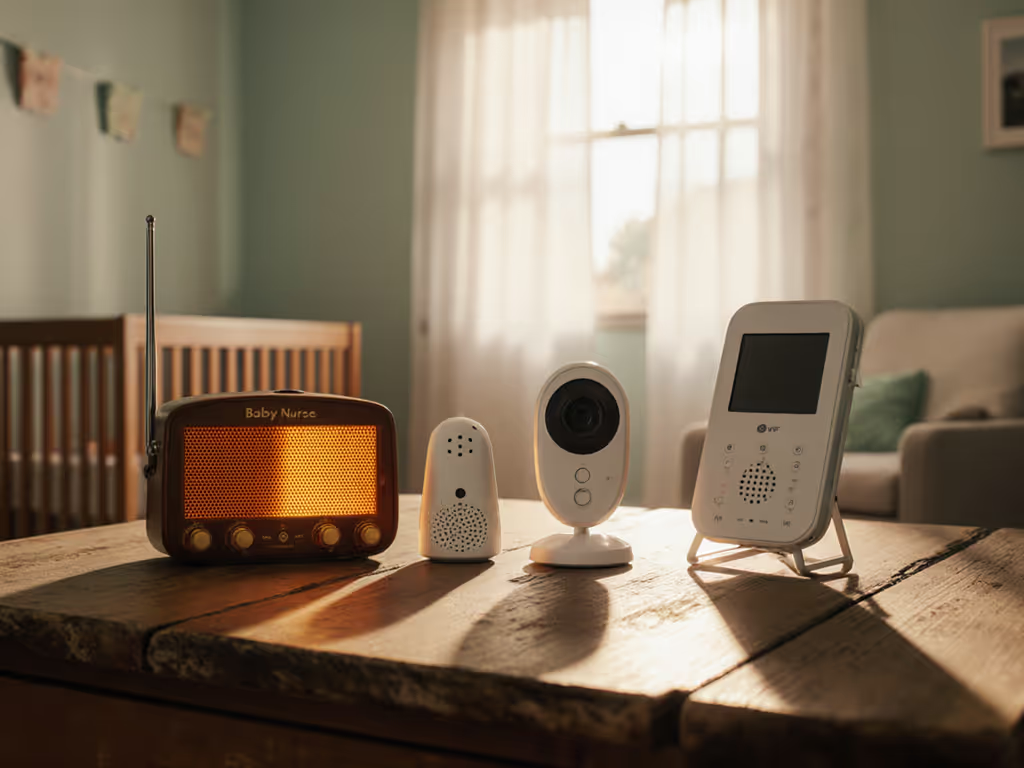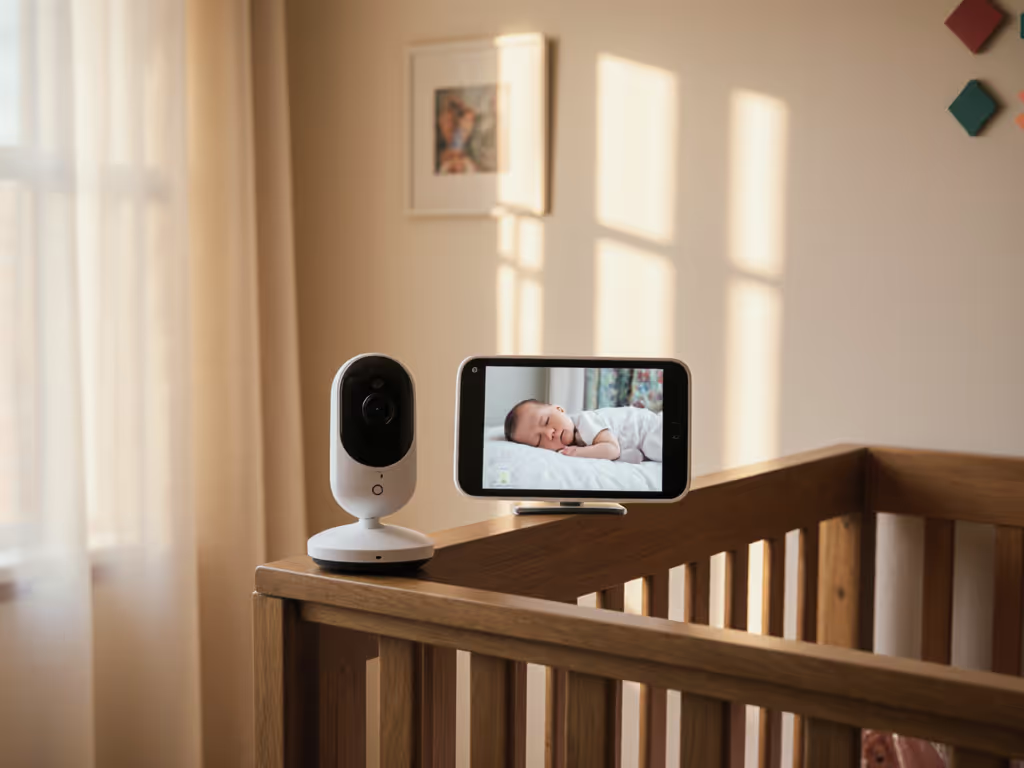
Visual Alert Baby Monitors: Accessibility Features for Hearing Loss
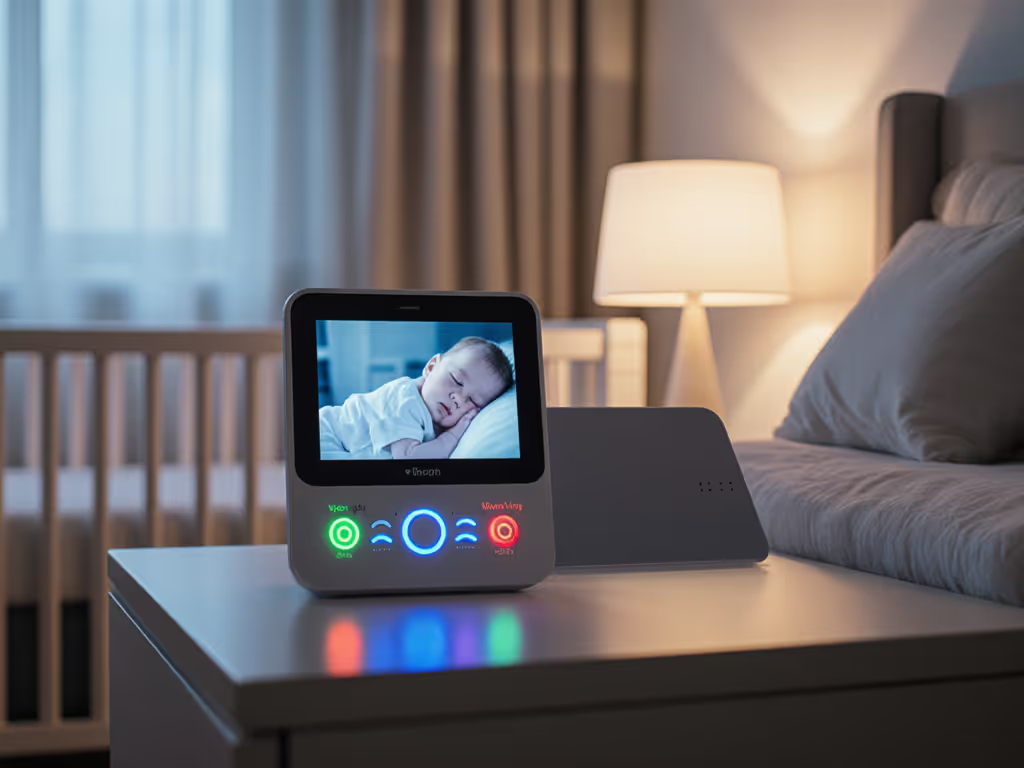
When parents with hearing loss seek reliable baby monitors for hearing impaired households, they face a unique intersection of accessibility needs and privacy concerns. As a security researcher who now advocates for parent data sovereignty, I've seen too many "secure" devices fail the fundamental test: does this monitoring solution serve your family without compromising your home's digital boundaries? True visual alert baby monitors shouldn't just illuminate or vibrate, and they must do so while respecting your home network as private territory. Monitoring a crib shouldn't entail monitoring a household. Today, we'll examine how accessibility features in baby monitoring technology intersect with data security through a practical threat model lens.
Understanding Accessibility in Baby Monitoring: A Threat-Model Approach
Why standard audio-only baby monitors fail for deaf and hard-of-hearing parents
Traditional audio monitors present an obvious barrier, because they rely solely on sound transmission without alternative notification pathways. For parents with hearing loss, this creates a critical safety gap where auditory cues alone cannot provide reliable monitoring. However, many "accessible" alternatives introduce new vulnerabilities: cloud-dependent video streams that require accounts, push notifications that leak metadata to third parties, or unnecessary data collection that extends far beyond the core function of monitoring a sleeping child.
If it phones home, it needs a very good reason.
How visual and vibration alerts work in specialized monitoring systems
Effective accessibility features in baby camera systems implement multiple notification pathways that account for varying degrees of hearing impairment while minimizing data exposure:
- Visual indicators: Bright LED arrays that intensify with sound levels, often with color-coding for different alert types
- Vibrating baby monitor alerts: Dedicated pads or parent units that vibrate with adjustable intensity
- Flashing light baby monitor systems: Room-wide illumination that activates with sound thresholds
- Tactile notifications: Wearable devices that provide haptic feedback
When evaluating these systems, I diagram the complete data flow (from sound capture to parent notification) to identify where information leaves your physical space. A simple question guides my assessment: Does this device require internet connectivity to deliver its core accessibility function? If the answer is yes, it likely introduces unnecessary privacy risks.
What makes a truly secure visual alert system?
The most secure visual alert monitors operate entirely within your local network or through direct device pairing. They should:
- Transmit audio/video without requiring cloud processing
- Provide visual/vibration alerts without smartphone dependencies
- Offer local configuration without mandatory accounts
- Implement provable encryption between units
- Maintain functionality during internet outages
Look for devices with firmware policy checks that explicitly state data never leaves your home network. When manufacturers document their encryption protocols (rather than merely claiming "secure transmission"), that's a positive signal in your threat model assessment.
Critical Considerations for Hearing Loss Baby Monitoring
Security versus accessibility: Addressing the false dichotomy
Many manufacturers present a false choice between accessibility features and security. In reality, the most reliable vibrating baby monitor alerts operate independently of cloud services. During my testing, I've encountered multiple "secure" monitors that sent metadata packets at odd hours (timestamps, device IDs, and signal strength metrics), even when parents weren't actively streaming. Default deny, then permit with careful verification of what data actually transmits from your home.
Evaluating wireless protocols for visual alert systems
Not all wireless technologies serve accessibility needs equally:
- DECT 6.0: Provides encrypted transmission between units with minimal interference (common in audio-only monitors with visual alerts)
- FHSS (Frequency Hopping Spread Spectrum): Resists interference in dense radio environments while maintaining direct device-to-device communication
- Wi-Fi: Most vulnerable to interference and privacy concerns unless properly configured with local-only viewing
When I audited a popular monitor claiming "end-to-end encryption," I discovered it still transmitted device metadata to third-party analytics servers, a classic example of why plain-language crypto explanations matter more than marketing claims.
Navigating privacy concerns with visual alert systems
Privacy concerns shouldn't be an afterthought for parents seeking hearing loss baby monitoring solutions. For a deeper dive into hardening settings and common pitfalls, see our guide to secure WiFi baby monitors. Follow this stepwise hardening checklist:
- Verify local operation: Confirm the visual/vibration alerts function without internet
- Examine data flows: Research if the manufacturer documents what data transmits externally
- Check for account requirements: Avoid systems mandating cloud accounts for core functionality
- Assess physical security: Ensure cameras have manual privacy covers when not in use
- Review firmware update policies: Determine if security patches introduce new data collection
I once had to replace a "secure" monitor after capturing its metadata transmissions at 3 a.m. (timestamps, device IDs, even signal strength beacons) when parents weren't even streaming. The solution? A local-only model with reset credentials that finally let the monitoring logs go quiet. Their shoulders dropped; mine did too.
Practical Implementation: Building Your Secure Monitoring Setup
Creating a layered alert system without compromising security
For parents with hearing loss, multiple notification methods provide redundancy while maintaining security:
- Primary alert: Direct device vibration or visual indicator (on parent unit)
- Secondary alert: Bed shaker or pillow vibrator connected via local-only protocol
- Tertiary alert: Flashing lamp system that operates within your home network
The critical security factor? Ensure all components communicate directly without requiring cloud mediation. Systems using Bluetooth LE or proprietary 2.4GHz protocols often provide the most secure local communication for flashing light baby monitor setups. Keep it local, keep it simple.
Real-world performance considerations for visual alert monitors
Thick plaster walls, metal framing, and multi-story layouts impact visual alert systems differently than audio-only monitors. Before purchasing:
- Test range in your actual home environment (not just manufacturer claims)
- Verify alert reliability across multiple floors
- Check for interference from other 2.4GHz devices
- Assess battery life of vibrating components
- Determine if visual alerts remain visible in daylight conditions
Evaluating manufacturer claims through a threat model lens
When manufacturers claim "secure transmission," request specifics. What encryption protocol? Where are encryption keys stored? Does the system maintain security during firmware updates? I've documented cases where devices advertised "encrypted secure transmission between units" (as one popular model does) but failed to disclose auxiliary data streams to third parties.
For true baby monitors for hearing impaired parents who prioritize security, look for:
- Explicit documentation of encryption standards
- No mandatory account creation
- Local configuration options
- Transparent firmware policies
- Independent security audits
Conclusion: Accessibility Without Compromise
The intersection of accessibility features and privacy in baby monitoring represents one of the most significant challenges for hearing-impaired parents. True security doesn't mean sacrificing functionality, it means implementing visual alert baby monitors that serve your specific needs while respecting your home network as sovereign territory.
When evaluating systems, apply the same rigorous data flow diagrams you would for any home IoT device, but with added attention to how accessibility features might create unexpected data pathways. Remember that parents own their homes and data, the monitoring solution should adapt to your security requirements, not the other way around.
For further exploration of secure monitoring practices tailored to specific home environments, consider reviewing independent security assessments of device protocols and joining parent communities focused on privacy-conscious technology adoption. Understanding the technical specifications behind marketing claims remains your most powerful tool in creating a monitoring system that works for your family without working against your privacy.

